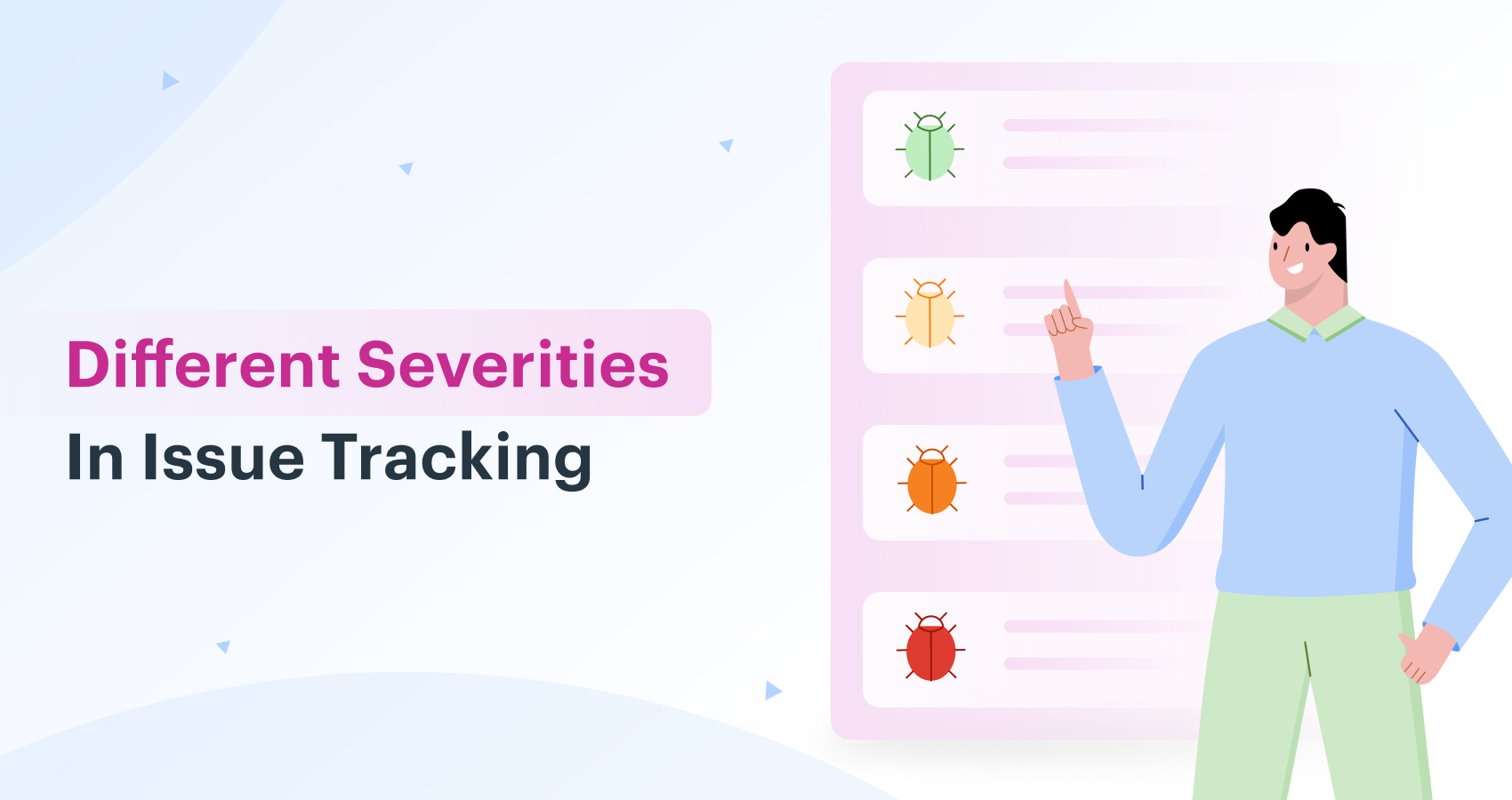An issue tracker plays an important role in determining how software issues are fixed. They help product testers, QA engineers, and product teams to identify bugs, collect valuable data and manage the process of resolving them from start to finish. But not all bugs identified during testing or reported by users are resolved immediately. According to a study by Statista, only about 21% of reported bugs ever get resolved immediately after they are identified.
Yet, product teams have to work in the most efficient way possible to ensure that bugs don’t affect the overall quality of the product and the user experience. This means there has to be a system in place to determine which bugs require immediate actions and which ones will be fixed later. The bug resolution process relies heavily on the concepts of severity and priority to determine how bugs will be resolved.
The Differences Between Bug Severity & Priority
Severity and priority are two common terms that get thrown around a lot in the bug tracking system. Both terms are used to highlight the threat bugs pose to a system and the urgency with which they are to be fixed.
In general, the order in which bugs are assigned for resolution and how much resources are dedicated to resolving them depends on severity and priority. But while both terms are related and somewhat connected, they are not the same.
Bug severity refers to the degree of impact that a defect has on a product. It relates mainly to the functionality and quality standards of the product. In essence, bug severity is concerned with whether a bug has a serious impact on the product or not and how far this impact goes.
Bug priority on the other hand is about the order in which issues should be resolved based on their impact on the system and other factors. Priority is more about scheduling rather than the technicality of the bug in itself. It simply answers the questions of whether or not a bug needs to be resolved now or it can be delayed till later.
In some sense, bug severity can be examined as a standalone factor. The impact of a bug on a system can be determined without reference to other bugs. Priority on the other hand is a scale of reference which considers how quickly bugs need to be resolved from a user experience perspective and in comparison with each other. Bug severity is unlikely to change. Priority on the other hand is an ever-changing factor that depends on other bugs in the system and factors relating to the business value of the product.
Levels of Bug Severities
Usually, the responsibility of determining how severe a bug is rests on the Quality Assurance team. They are familiar with the expected functionality of a product and can measure the impact of a defect on the product.
By measuring the overall impact of the bug on the expected performance of an application, they can assign a level of severity to the various bugs that have been identified by testers or reported by users.

Based on these factors, bugs can be divided into the following levels of severity:
Low Severity
Low severity bugs will have no noticeable impact on a product and will not result in a system breakdown. These types of bugs are mostly related to the user interface of the application rather than any of the system functions. Examples include wrongly sized buttons, spelling issues, object color issues, and so on.
Minor Severity
Minor bugs cause some undesired behavior in your software product, but they do not cause any disruption to the app’s functions. Thus, their impact is minimal and the app will still perform its core functions as expected. Missing space on your product interface or if a button or page object appears in the wrong position on the page is an example of a minor severity bug.
Major Severity
Major bugs are more critical as they are capable of causing a system-wide collapse on large parts of an application. Bugs like this cause certain functions not to work properly, but you may still be able to use the app since other system functions are still functioning. If the submit button on your contact form does not work for instance or navigates to a different page, it could be classified as a major bug.
Critical Severity
Critical bugs make a product unusable under certain conditions. Errors like this affect the core functionality of an app and may cause security breaches, data loss, or a complete shutdown of an application thereby making it impossible to use the app for its intended purpose
Conclusion
One of the first steps in bug resolution is to determine the severity and priority of a bug. This will help determine how a bug would be resolved and how resources will be allocated towards resolving it. One of the core functions of a bug tracking tool is to make it easier to organize bugs based on their level of severity and prioritize them accordingly. Get started with Kissflow Platform and learn how to leverage its features to drive better results
Using a tool like Kissflow Workflow, product teams can collect bug-related data needed to determine the severity of issues. The platform also aids the process of delegating tasks that aid in bug resolution. The status of each bug is updated in real-time to ensure everyone involved is kept informed of progress.
Sign up today to learn more about how your team can benefit from the most comprehensive issue tracker, Kissflow Workflow. Try it for free.